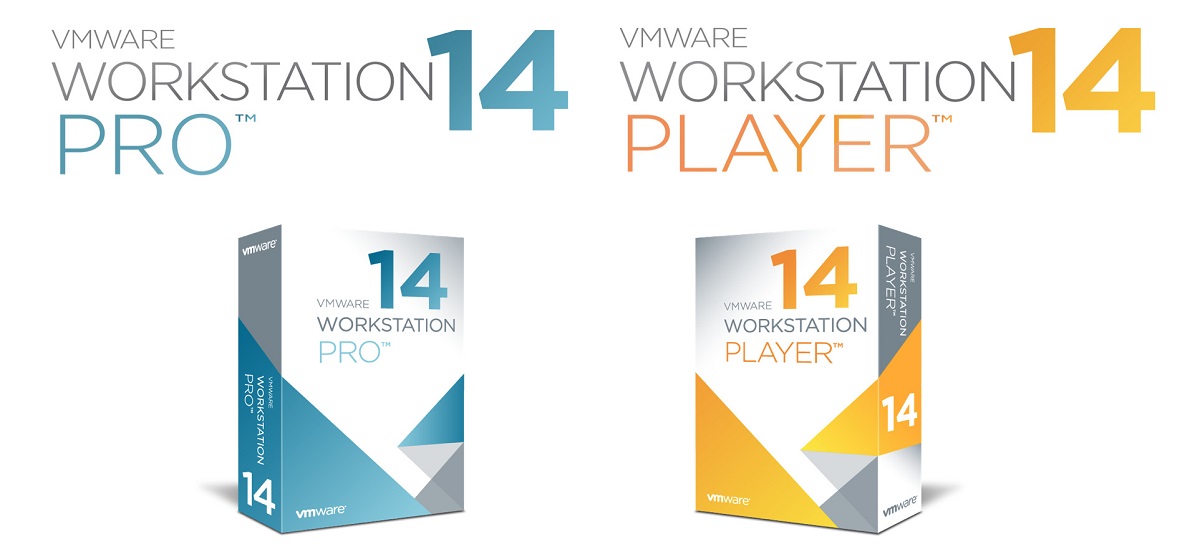Introduction
Welcome to the world of virtual machines and the decision-making process of assigning RAM to them! As a Linux workstation user with 32 GB of RAM, it’s crucial to understand the optimal allocation of RAM for your virtual machines to ensure smooth performance and efficient resource utilization. Whether you’re running multiple virtual machines simultaneously or focusing on specific tasks, finding the right balance is essential.
RAM, or Random Access Memory, plays a fundamental role in the performance of virtual machines. It serves as a temporary storage space for data that the virtual machine needs to access quickly. When allocating RAM to a virtual machine, you are essentially providing it with the necessary power to multitask, run applications, and process data efficiently.
This article aims to guide you in making informed decisions about assigning RAM to your Linux virtual machines. We will explore various factors to consider, such as the purpose of the virtual machine, the operating system and applications it utilizes, and how to optimize resources effectively. By the end, you’ll have a clearer understanding of how many gigabytes of RAM to allocate, enabling you to create a balanced and high-performing virtual environment.
Understanding RAM and Virtual Machines
Before delving into the process of assigning RAM to virtual machines, it’s essential to understand the role of RAM in the functioning of these virtual environments. RAM, also known as Random Access Memory, is a crucial hardware component that allows computers to quickly access and store data that is actively being used. In the context of virtual machines, RAM is allocated to create a virtual system with its own dedicated resources.
Virtual machines are essentially software emulations of physical computers. They enable you to run multiple operating systems and applications simultaneously on a single physical machine. Each virtual machine has its own allocated resources, including CPU, storage, and RAM, which are independent of the host machine and other virtual machines.
When a virtual machine is running, it requires a certain amount of RAM to store the operating system, applications, and data that are actively being used. This allocated RAM acts as a temporary working space for the virtual machine, allowing it to quickly access and process information. The amount of RAM assigned to a virtual machine directly impacts its performance and ability to handle resource-intensive tasks.
It’s worth mentioning that the host machine (your Linux workstation) also requires a portion of the available RAM to run its own operating system, applications, and background processes. Therefore, it’s important to consider the amount of RAM needed by the host machine itself when allocating resources to virtual machines.
When deciding on the amount of RAM to assign to a virtual machine, you should take into account the operating system requirements, the applications and workloads it will handle, and the total amount of RAM available on your Linux workstation. Allocating an insufficient amount of RAM can lead to sluggish performance, whereas allocating too much can result in inefficient use of resources.
To optimize the performance and resource utilization of your virtual machines, it’s crucial to strike a balance by allocating an appropriate amount of RAM based on the specific needs of each virtual machine. In the next section, we will explore the factors to consider when determining the ideal RAM allocation for your Linux virtual machines.
Factors to Consider when Assigning RAM to a Virtual Machine
Assigning the right amount of RAM to a virtual machine is a critical step in optimizing its performance and ensuring efficient resource utilization. To make an informed decision, there are several factors that you should consider before allocating RAM to your Linux virtual machines:
1. Purpose of the Virtual Machine: Determine the primary purpose of the virtual machine. Is it for general web browsing, software development, database management, or other resource-intensive tasks? Different tasks require varying levels of RAM allocation.
2. Operating System Requirements: Understand the minimum and recommended RAM requirements for the operating system you plan to run on the virtual machine. Operating systems with graphical user interfaces typically require more RAM than command-line-only systems.
3. Applications and Workloads: Consider the applications and workloads that will run on the virtual machine. Resource-intensive applications like video editing software or virtualization tools may require more RAM to function smoothly.
4. Concurrency and Multitasking: Evaluate the level of concurrency and multitasking you expect from the virtual machine. Will it be running multiple applications simultaneously? Will there be multiple users accessing the virtual machine concurrently? These factors will impact the required RAM allocation.
5. Memory Overhead: Take into account the memory overhead of the virtualization software you are using. Virtualization platforms like VMware or VirtualBox consume additional RAM to manage the virtual machines. Consider this overhead when calculating the RAM allocation.
6. Host Machine Resources: Assess the total amount of RAM available on your Linux workstation, considering that the host machine also requires resources to run its own operating system and processes. Allocate RAM keeping in mind the needs of both the host machine and virtual machines.
7. Future Scalability: Anticipate future needs and scalability requirements. If you expect the workload or resource demands of the virtual machine to increase over time, allocate additional RAM to accommodate growth without compromising performance.
8. RAM Balancing: Balance the RAM allocation among multiple virtual machines running on the same host machine. Allocate RAM based on the importance and resource requirements of each virtual machine to ensure fair and efficient resource usage.
By carefully considering these factors, you can make an informed decision about the RAM allocation for your Linux virtual machines. In the next section, we will provide recommended RAM allocations for common Linux virtual machine use cases to serve as a starting point in your decision-making process.
Recommended RAM Allocation for Common Linux Virtual Machines
Assigning the appropriate amount of RAM to a virtual machine is essential for optimal performance and resource utilization. While the specific requirements will vary depending on the workload, here are some recommended RAM allocations for common Linux virtual machine use cases:
1. Web Browsing and Administration – For a lightweight virtual machine used primarily for web browsing and performing administrative tasks, allocating 1-2 GB of RAM should be sufficient. This will provide enough resources for smooth browsing and running essential tools without excessive memory usage.
2. Software Development – If you’re using a virtual machine for software development, particularly when running IDEs (Integrated Development Environments) and compiling large codebases, it is recommended to allocate 4-8 GB of RAM. This will ensure smooth performance and efficient coding experience.
3. Database Management – Virtual machines used for database management, especially when running resource-intensive database servers like MySQL or PostgreSQL, may require more memory. Allocating 8-16 GB of RAM is recommended for optimal performance and handling large datasets.
4. Virtualization and Server Hosting – When running virtualization software like VMware or hosting multiple server applications, it is crucial to allocate sufficient RAM to support the workload. Depending on the number of virtual machines and their resource requirements, allocating 16-32 GB (or more if needed) can ensure smooth operation and prevent resource exhaustion.
5. Data Analytics and Machine Learning – Data-centric tasks such as data analytics and machine learning require substantial computational resources. Allocating 32 GB or more of RAM for these virtual machines is often recommended to handle the sizeable datasets and memory-intensive computations involved in these tasks.
Remember that these recommendations serve as starting points and should be adjusted based on your specific requirements and available resources. It’s also important to monitor the virtual machine’s performance and adjust the allocated RAM as needed to ensure optimal utilization.
By following these general guidelines, you can allocate RAM effectively and create a high-performing virtual environment for your Linux workstation. In the next section, we will explore best practices for optimizing RAM allocation in Linux virtual machines.
Best Practices for Optimizing RAM Allocation in a Linux Virtual Machine
Efficiently managing RAM allocation in a Linux virtual machine is crucial to ensure optimal performance and resource utilization. Here are some best practices to follow when optimizing RAM allocation:
1. Monitor and Analyze Performance: Regularly monitor the virtual machine’s performance and resource usage. Use tools like the Linux top command or resource monitoring utilities to identify any bottlenecks or excessive memory usage. This will help you determine if the allocated RAM is adequate or needs adjustment.
2. Consider Memory Ballooning: Take advantage of memory ballooning, a technique used by certain virtualization platforms to reallocate memory among virtual machines dynamically. This allows unused memory from one virtual machine to be utilized by another, optimizing overall resource usage.
3. Adjust RAM Allocation Based on Workload: Analyze the workload patterns and adjust the RAM allocation accordingly. If a virtual machine frequently experiences high memory usage or becomes unresponsive, consider increasing the allocated RAM. Conversely, if memory usage is consistently low, you can decrease the allocation to free up resources for other virtual machines.
4. Optimize Operating System Settings: Fine-tune the operating system settings within the virtual machine to optimize RAM usage. Adjust the swappiness parameter to control how frequently the system swaps data between RAM and disk. Lowering swappiness can reduce unnecessary swapping and improve overall performance.
5. Optimize Application Settings: Configure the applications running on the virtual machine to make efficient use of available memory. Adjust cache sizes, configure memory limits, and optimize application-specific settings to ensure optimal performance without wasteful memory usage.
6. Implement Memory Compression: Some virtualization platforms offer memory compression techniques that can help reduce the need for excessive swapping by compressing unused memory pages. This can alleviate pressure on RAM and improve overall performance.
7. Consider Overcommitting: In certain scenarios, such as when running low-impact applications or managing multiple virtual machines with varying resource requirements, you can consider overcommitting memory. However, exercise caution as overcommitting can lead to performance degradation if resource demands exceed available memory.
8. Regularly Update and Patch: Keep the virtual machine’s operating system and applications up to date with the latest patches and updates. This ensures optimal performance, bug fixes, and security enhancements that can impact memory usage.
By implementing these best practices, you can optimize RAM allocation in your Linux virtual machine, ensure efficient resource utilization, and deliver optimal performance for your workloads. However, continually monitoring and adjusting based on usage patterns is key to maintaining an optimal balance.
Conclusion
Allocating the right amount of RAM to your Linux virtual machines is essential for optimal performance, resource utilization, and overall productivity. By considering factors such as the purpose of the virtual machine, operating system requirements, workloads, and available resources, you can make informed decisions about RAM allocation.
Remember, these recommendations serve as starting points. It’s essential to monitor the performance of your virtual machines and adjust the allocated RAM as needed based on usage patterns and resource demands.
Following best practices, such as monitoring performance, optimizing operating system and application settings, and considering techniques like memory ballooning and memory compression, can further enhance RAM allocation efficiency.
By achieving an optimal balance between RAM allocation and resource utilization, you can create a high-performing virtual environment that meets your specific needs. This will result in smooth operation, improved productivity, and the ability to run resource-intensive applications effectively.
Keep in mind that technology and workload requirements evolve over time, so periodically reevaluating RAM allocation for your virtual machines is recommended. By staying proactive and adaptive, you can ensure that your Linux virtual machines continue to perform optimally as your needs change.
In conclusion, allocating RAM to virtual machines on your Linux workstation is a crucial step in creating a successful and efficient virtualized environment. Consider the factors discussed, implement best practices, and regularly monitor and adjust the RAM allocation to maximize performance and resource utilization. With proper RAM allocation, you can unleash the full potential of your Linux virtual machines and achieve superior productivity and performance.

























